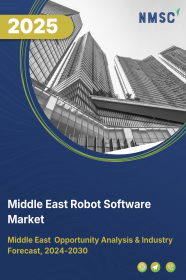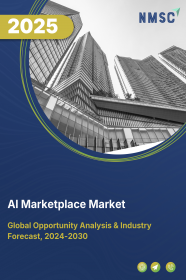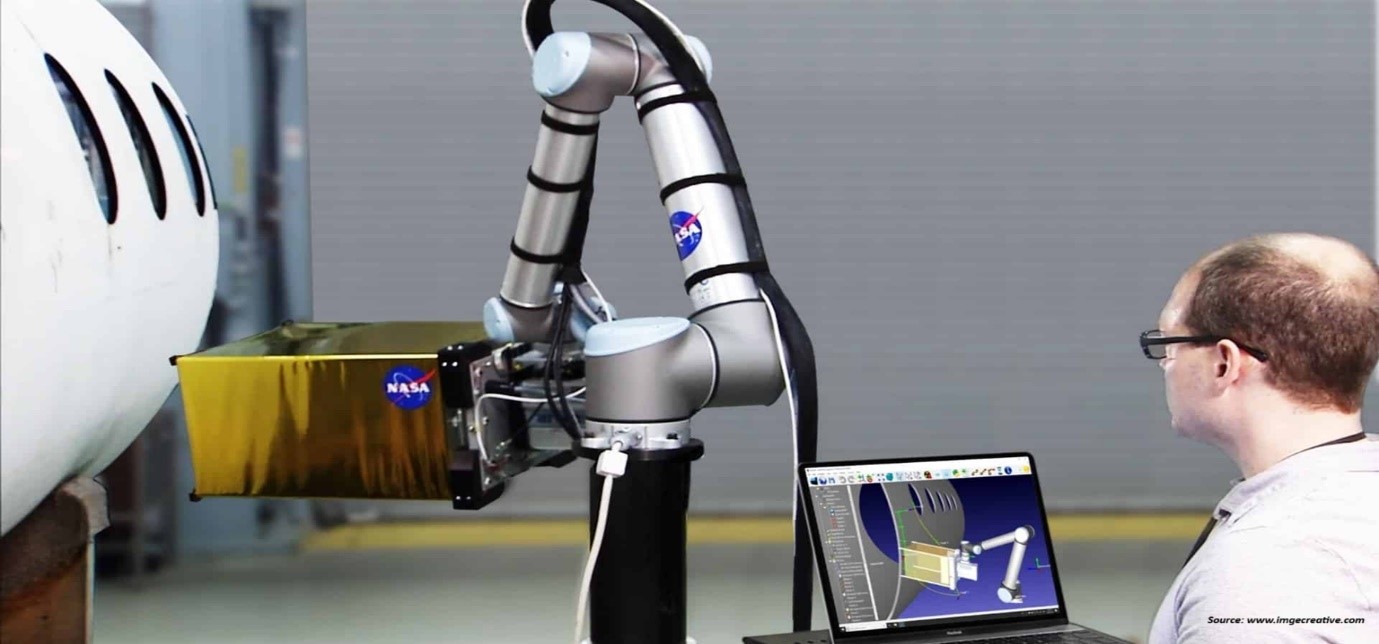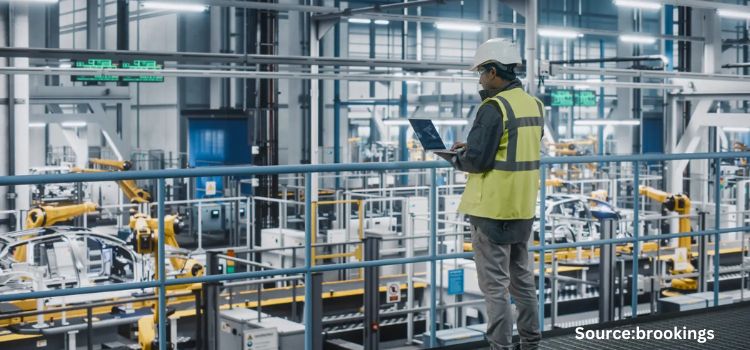
Middle East Robot Software Market by Software Type (Recognition Software, Simulation Software, Predictive Maintenance Software, Communication Management Software, and Data Management And Analysis Software), by Robot Type (Service Robots and Industrial Robots), by Deployment Mode (On-premise and On-demand), by Organization Size (Large Enterprises and Small and Medium-sized Enterprises (SMEs) – Opportunity Analysis and Industry Forecast, 2024–2030
Industry: ICT & Media | Publish Date: 14-Feb-2025 | No of Pages: 126 | No. of Tables: 92 | No. of Figures: 57 | Format: PDF | Report Code : IC2399
US Tariff Impact on Middle East Robot Software Market
Trump Tariffs Are Reshaping Global Business
Middle East Robot Software Market Overview
The Middle East Robot Software Market size was valued at USD 283.4 million in 2023, and is expected to reach USD 1275.0 million by 2030, with a CAGR of 22.9% from 2024 to 2030. Robot software comprises a suite of programs and algorithms devised to govern and oversee the operations of robots or robotic systems in various industries such as logistics, manufacturing, entertainment, healthcare, and more.
Its functionality encompasses several key components. Primarily, it manages and coordinates the movements and behaviors of robots, ensuring precise and efficient task execution by issuing detailed commands to robotic components such as motors and actuators. Moreover, robot software plays a crucial role in interpreting data from diverse sensors embedded within robots. These sensors, including cameras, Light Detection and Ranging (LIDAR) sensors, and tactile sensors, provide essential environmental feedback enabling robots to perceive and understand their surroundings.
An essential aspect of robot software is its ability to make intelligent decisions using artificial intelligence (AI) and machine learning (ML) algorithms. By analyzing data from sensors, following predefined rules, or learning from past experiences, robots can adapt to changing conditions. This intelligence allows them to operate autonomously, making real-time decisions and adjusting their actions accordingly. Additionally, robot software facilitates communication and networking between robots, enabling collaboration for complex tasks or data sharing with a central control system. In industrial settings, this interconnectedness allows for coordinated operations, leading to improved efficiency and productivity.
Growing Focus on Safety and Compliance Propels the Middle East Robot Software Market
The growing focus on safety and compliance acts as a significant driver propelling the growth of the Middle East robot software market. With heightened concerns regarding workplace safety and regulatory compliance, organizations prioritize the adoption of robot software solutions that ensure safe and compliant operation of robotic systems. Robot software plays a crucial role in implementing safety features, risk assessment tools, and compliance frameworks, mitigating the risk of accidents and ensuring adherence to industry regulations and standards.
Furthermore, as the regulatory landscape evolves and becomes more stringent, there's an increased demand for robot software that enables real-time monitoring, reporting, and documentation of safety and compliance metrics. By addressing these concerns and providing robust solutions for safe and compliant operation, the growing focus on safety and compliance drives the adoption of robot software across industries, stimulating the Middle East robot software market growth.
Rising Labor Costs and Workforce Challenges Drive the Growth of the Middle East Robot Software Market
Rising labor costs and workforce challenges serve as significant drivers fueling the expansion of the Middle East robot software market. As labor expenses continue to climb, particularly within industries reliant on labor-intensive tasks, organizations seek solutions to mitigate costs without compromising productivity.
This trend encourages widespread adoption of automation technologies, including robots, to streamline operations and reduce reliance on human labor. Central to this adoption is the pivotal role played by robot software, enabling efficient programming, control, and optimization of robotic systems.
Moreover, workforce challenges such as skill shortages and demographic shifts further incentivize businesses to invest in robot software solutions, ensuring operational continuity and competitiveness. Consequently, the robot software market experiences sustained growth as organizations increasingly turn to automation to address labor-related challenges and enhance operational efficiency.
Cybersecurity and Data Protection Concerns Associated with Robot Software Restrain the Growth of the Middle East Robot Software Market
The presence of cybersecurity and data protection concerns linked with robot software serves as a significant impediment to the Middle East robot software market growth. As robots become more interconnected within digital ecosystems, they become susceptible to cyber threats such as unauthorized access, data breaches, and malware attacks.
Insufficient cybersecurity measures within robot software may jeopardize sensitive data, intellectual property, and operational integrity, potentially resulting in financial losses and damage to organizations' reputations. Additionally, with the rise of IoT-enabled robots and the accumulation of extensive data, there is an increased risk of data privacy violations and non-compliance with regulations.
Consequently, organizations are hesitant to embrace robot software solutions lacking robust cybersecurity features and data protection mechanisms, hindering the Middle East robot software market expansion. To foster broader adoption of robot software across various industries, it is crucial to address these concerns by implementing enhanced cybersecurity measures, encryption protocols, and compliance frameworks to instill trust and ensure data security.
The Expansion of Robotics-as-a-Service Creates New Opportunities in the Middle East Robot Software Market
The expansion of Robotics-as-a-Service (RaaS) presents fresh avenues in the market by offering a more accessible and cost-effective approach for organizations to implement robotics solutions in the country. RaaS models enable businesses to procure robotic hardware, software, and associated services through subscription plans, eliminating the necessity for significant upfront investments in capital-intensive assets.
This method reduces entry barriers, particularly for small and medium-sized enterprises (SMEs) or entities with constrained budgets, enabling them to harness robotics technology without the financial burdens of ownership. Moreover, RaaS models often encompass maintenance, support, and software updates within the subscription package, providing additional value and streamlining the deployment process.
Through democratizing access to robotics technology and fostering a pay-as-you-go model, the expansion of RaaS opens up novel market prospects, propelling adoption across various industries and stimulating innovation in robot software solutions.
Competitive Landscape
Several key players operating in the Middle East robot software industry include IBM, NVIDIA, ABB Ltd., FANUC, Teradyne, Inc., H2O.ai, Brain Corp, CloudMinds, Clearpath Robotics, and Neurala, Inc. These market players are adopting strategies to maintain their dominance in the market.
Middle East Robot Software Market Key Segments
By Software Type
-
Recognition Software
-
Simulation Software
-
Predictive Maintenance Software
-
Communication Management Software
-
Data Management and Analysis Software
By Robot Type
-
Service Robots
-
Ground
-
Aerial
-
Underwater
-
-
Industrial Robots
-
Traditional Industrial Robots
-
Articulated Robots
-
SCARA Robots
-
Parallel Robots
-
Cartesian Robots
-
Other Robots
-
-
Collaborative Industrial Robots
-
By Deployment Mode
-
On-premise
-
On-demand
By Organization Size
-
Large Enterprises
-
Small and Medium-sized Enterprises (SMEs)
By Industry Vertical
-
Banking, Financial Services, and Insurance (BFSI)
-
Automotive
-
Retail and eCommerce
-
Aerospace & Defense
-
Healthcare and Life Sciences
-
Transportation and Logistics
-
Manufacturing
-
Telecommunications and IT
-
Academia and Research
-
Media & Entertainment
-
Others
REPORT SCOPE AND SEGMENTATION:
|
Parameters |
Details |
|
Market Size in 2023 |
USD 283.4 Million |
|
Revenue Forecast in 2030 |
USD 1275.0 Million |
|
Growth Rate |
CAGR of 22.9% from 2024 to 2030 |
|
Analysis Period |
2023–2030 |
|
Base Year Considered |
2023 |
|
Forecast Period |
2024–2030 |
|
Market Size Estimation |
Million (USD) |
|
Growth Factors |
|
|
Companies Profiled |
10 |
|
Market Share |
Available for 10 companies |
|
Customization Scope |
Free customization (equivalent up to 80 working hours of analysts) after purchase. Addition or alteration to country, regional, and segment scope. |
|
Pricing and Purchase Options |
Avail customized purchase options to meet your exact research needs. |
KEY PLAYERS
-
IBM
-
NVIDIA
-
ABB Ltd.
-
FANUC
-
Teradyne, Inc.
-
H2O.ai
-
Brain Corp
-
CloudMinds
-
Clearpath Robotics
-
Neurala, Inc.

















 Speak to Our Analyst
Speak to Our Analyst





















